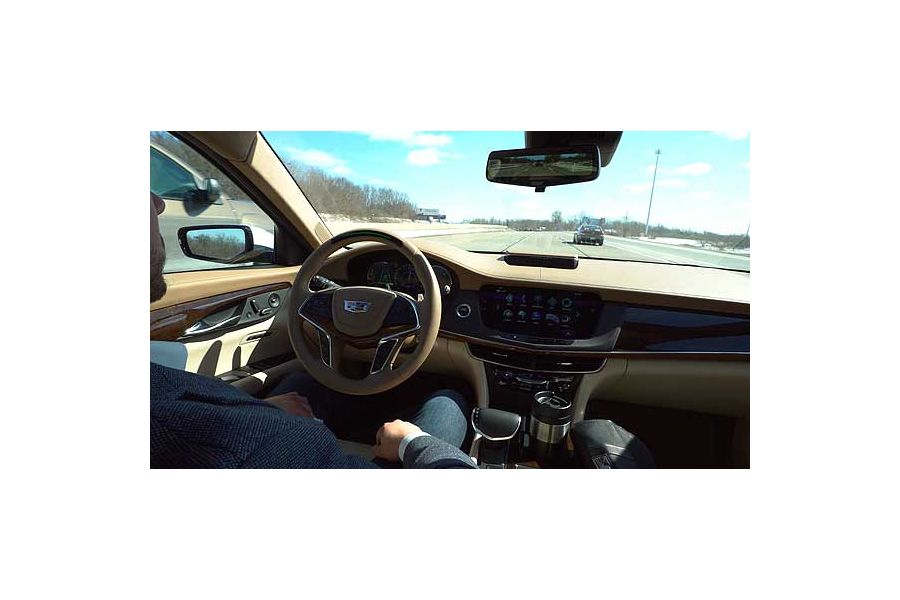Cadillac Unveils New ‘Super Cruise’ System

With all the buzz over the last few years regarding self-driving cars, you’d think by now we’d be able to have a vehicle pull up to the door and drive its owner to the office autonomously, leaving him or her to catch up on work, watch a video or take a quick nap.
Unfortunately, while elemental self-driving features are available in the meantime that can, for example, help keep a vehicle from crossing highway lane markers, steer a vehicle into an open parking space with only minimal input or brake automatically to help avoid a collision, fully-autonomous cars will probably still take another several years to fully perfect and will face myriad legal and legislative roadblocks before they’re allowed in all 50 states.
In the meantime, Cadillac will be offering the next best thing when it debuts what it’s calling “Super Cruise” this fall in the 2018 North American versions of its flagship CT6 sedan. Caddy says the system will be capable of steering, braking and lane-centering the car in highway driving without human intervention.
Super Cruise affords hands free operation by essentially incorporating enhanced versions of the CT6’s existing suite of driver assistance technology – including adaptive cruise control, blind spot and lane-monitoring systems, along with a self-steering function – into one intelligent package. While engaged, the system will maintain a safe distance between the vehicle and the traffic ahead at a maximum speed selected by the driver, and will keep the car centered within the lane markers.
But it’s still not exactly a 100 percent eyes-off-the-road experience. For added safety, Super Cruise includes a sophisticated driver attention function that keeps an electric eye on a motorist’s head position via a steering wheel-mounted camera to ensure he or she is properly and prudently monitoring the road and is ready to re-take control of the vehicle if necessary.
Should a driver be caught, say, reading a book or applying makeup while in Super Cruise mode, the system will give a series of audible and visual warnings to tell him or her to refocus on the road ahead; if after continued warnings the system determines the motorist is otherwise unresponsive, it will bring the vehicle to a controlled stop and, if necessary, contact first responders.
Another key to the system that’s a first among semi-autonomous driving technology is advanced LiDAR-scanned mapping of the entire U.S. and Canadian highway systems which, combined with real-time data from camera and GPS sensors is said to improve the CTS’ self-driving prowess by anticipating and being able to react to hills and curves along one’s driving route.
However, the system is limited to use on “limited access highways,” which are defined as multi-lane roads having defined on- and off-ramps. Super Cruise won’t operate over city streets or rural two-lane roads. “While it is technically possible for the technology to drive hands-free on other kinds of streets and roads, we feel strongly that this targeted approach is the best to build consumer and regulatory confidence and enthusiasm for advanced mobility,” explains Barry Walkup, the system’s chief engineer.
Not just a convenience, auto-piloted cars are hoped to help save lives. More than 30,000 people are killed annually in crashes, with the overwhelming majority of them due to driver error. Unlike a human motorist, a self-driving car won’t be tempted to take unnecessary risks on the road and can’t get lost in thought or otherwise dangerously distracted during a boring commute.
No word yet on pricing or availability within the CT6 line. We can assume the system will be offered subsequently on other Cadillac and General Motors vehicles moving forward.
Copyright © CTW Features